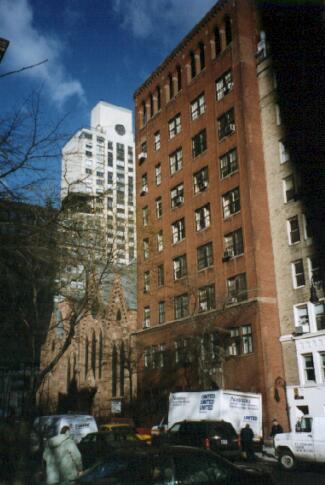

Calvary House is the parish house of Calvary Episcopal Church, located on Park Avenue South at 21st Street in New York City. The church dates to the 1850s, while the the parish house was built in 1928, on a lot previously occupied by the rectory. Calvary House, facing on Gramercy Park, is the material embodiment of the parish's ministry.
Like many urban churches, in the 1920s Calvary was struggling with a declining membership and a changing neighborhood. In 1925, the vestry called a new rector, Samuel Shoemaker, a close follower of evangelist Frank Buchman. Shoemaker felt that the key to Calvary's revival lay in "personal ministry"--one-on-one counseling and small group programs. He also concluded that these new programs required a new building. The parish raised $270,000 in a few months and constructed Calvary House. The eight story building includes large and small meeting rooms, offices, and apartments for the parish staff, all designed to make Calvary a center of personal ministry and "a training center of spiritual leadership." Calvary House became the American headquarters of Buchman's Oxford Group Movement. In Oxford Group meetings here, Bill Wilson met Shoemaker and developed the ideas behind Alcoholics Anonymous.
Shoemaker expelled Buchman's movement in December, 1941. Shoemaker himself left Calvary in 1951. Calvary House now houses a number of community organizations and the base for the parish's outreach to the poor and homeless of New York's east side.
Information on Calvary Church is from Helen Smith Shoemaker, I Stand By the Door: The Life of Sam Shoemaker (New York: Harper and Row, 1967). The photo is by Daniel Sack, the project's associate director, who wrote his dissertation on the Buchman movement.
Return to the objects page
Return to the project home page